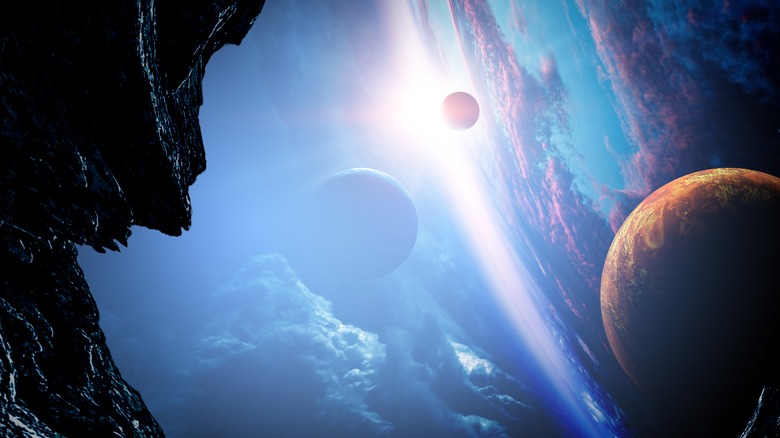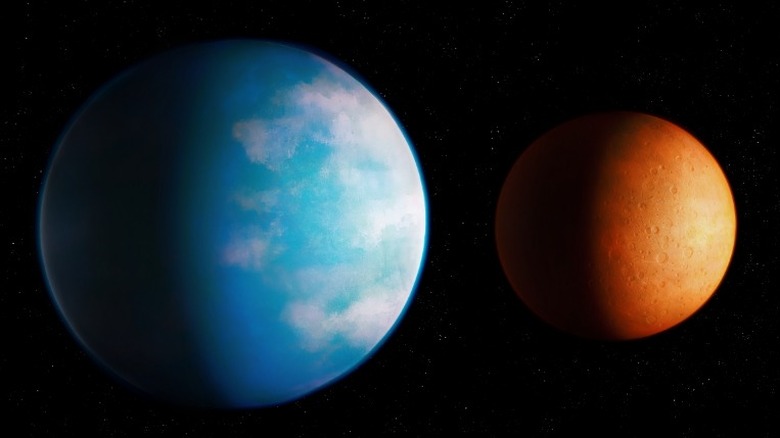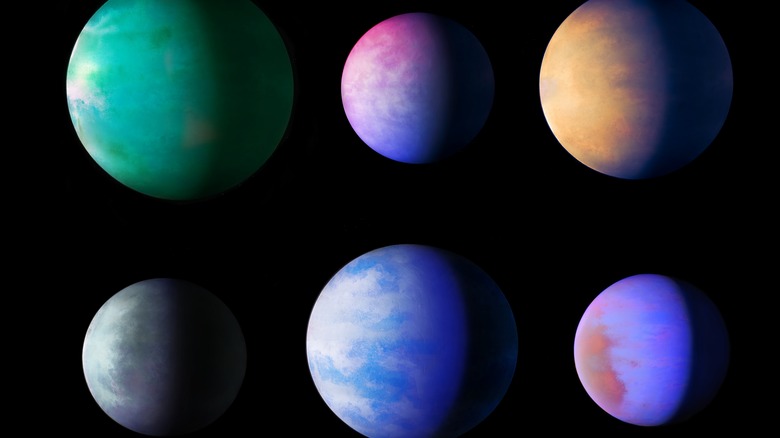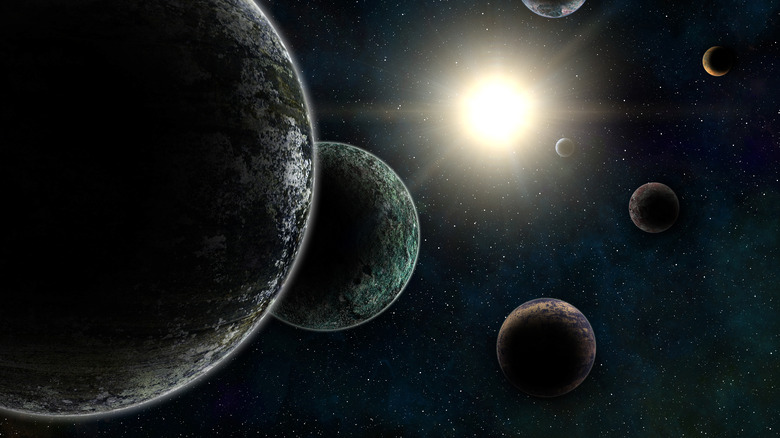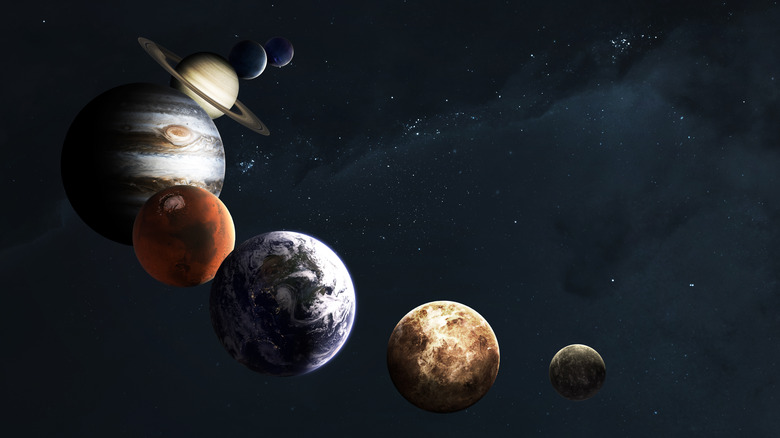The Four Types Of Planetary Systems Scientists Say Make Up Our Universe
Scientists have grappled for centuries over the composition of the universe. From its infinite size to the search for intelligent life on planets beyond our own, a variety of questions keep humans up at night. One of the most profound features of the exploration of space beyond our own is the curiosity over how our solar system is arranged with small, rocky planets in the inner half of the Sun's gravitational grip and larger, gas giants existing farther out. This placement seemed logical to scientists and astronomers, after all, it's the only reference point that humans could use for much of our history!
But for a long time, astronomers have known that other structured layouts could and did exist. With the help of the Kepler telescope, researchers have further developed this understanding. They've found that planets in solar systems far beyond our own typically find an arrangement in a way that places a number of different planets of roughly similar size and mass in alignment with one another. 80% of explored solar systems present their planetary layout in this manner, according to research published by The University of Bern. But in researching the manner of planetary formation, scientists at the University, headed by Dr. Lokesh Mishra, found that four distinct planetary system classifications exist.
Similar systems
The first, and most common, is the 'similar' system. Similar planetary systems follow the "peas in a pod" analogy that the team initially conceived of as a way to comprehend what they were seeing through Kepler's lens. These planetary systems are found throughout the universe and contain roughly similar planets running outward around the central star. No two planets will ever be exactly the same, of course, but the similarities in mass and physical size mean that the planets found in these kinds of systems were formed of roughly the same matter and resulted in a more or less uniform product. Adding further to this finding is the fact that exoplanets can now be weighed by measuring local, atmospheric starlight around the distant object.
The team discovered that similar systems emerge from small, low-mass gas and dust discs, and form around stars with a small measurement of heavy elements. This feature makes logical sense, given the prevalence of similar systems found in the research.
Mixed systems
Mixed systems are the most volatile of the bunch. These systems are formed by medium-sized gas and dust discs and therefore contain a great variety of metal and chemical components in the planetary bodies. As the individual entities are forming, they often collide with one another or other space debris, throwing the bodies out of equilibrium and adding volatility to the surface and core of plants within the system. Planets found in a mixed system may eject large chunks or their own mass or add sizable matter after a collision with another body.
The result of a mixed system is one of relative unpredictability in the layout of the planets in order from the central star. Mixed systems can feature large and small planetary bodies in a truly randomized order. What's more, variation can be substantial among planets found in a mixed architecture system. The study reports a finding of about 8% mixed systems in the simulation and roughly 5% in true nature beyond our solar system.
Ordered and anti-ordered systems
The final system classifications are mirror images of one another. The ordered system is a structural layout that places small planets closest to the star in the center and larger planets farther out. Conversely, an anti-ordered system sees distance and size operate relative to one another in reverse order. The largest planets in the system are found closest to the star and the smallest are located at the fringes of the gravitational field that maintains synchronous rotation.
The Earth is found within an ordered planetary system, and the research team found that both of these structural layouts are established around gigantic debris and gas fields. This large volume of compositional gas and metal allows for the establishment of larger planets. While none of these systems require 'gas giants' like those found in our solar system, a sliding scale of planetary mass certainly requires a considerable amount of base material to work with, as it were.
Key findings from the study
One interesting finding that came out of the research was the fact that strong correlation was measured across all four planetary systems. The research team noted in their November 2022 paper: "We expect planetary masses in mixed, ordered, and anti-ordered systems should (by definition) have low correlations. On the other hand, similar class architecture should exhibit strong correlation. Surprisingly, in log space all architecture classes show strong correlations." However, they note that in linear space, the coefficient values more closely resemble their assumptions.
They also found that the architecture classification of a system is linked strongly to the combined mass of a given system's planets. Interestingly, the outcome of simulations run by the team showed that while similar systems were the most common, the least common (roughly 1.5%) was represented by the type of structural layout that our own world resides in. They also noted that no systems found in true space (not in the simulated environment) are currently known to exhibit an anti-ordered architecture, but this remains possible. In the University of Bern's press release, Dr. Lokesh Mishra noted that the framework developed here can be applied to other systemic measurements and that the results of the study link "the initial conditions of planetary and stellar formation to a measurable property: The system architecture." For the first time, he notes, "we have succeeded in bridging this huge temporal gap [of billions of years of evolution]."
